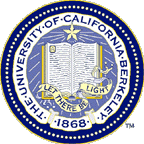A widespread use of lasers in AM is to induce a given temperature and a phase transformation in materials deposited onto a substrate. For a laser to induce a phase transformation in the material, the power intensity must be sufficiently high to induce melting and, in all cases, stay below a vaporization or burn-off temperature of the target material. Oftentimes, there is variability in the laser input power to the target zone. For a process designer, a central question is to determine the uncertainty of the resulting material properties, i.e. temperature and state (solid or melted), due to uncertainty in the energy (laser) input.
This motivates the present work, which integrates relatively fundamental heat transfer models that describe the thermal effects due to
(a) laser irradiation,
(b) heat conduction into the surface of deposition,
(c) black-body infrared radiation outwards into the surroundings,
(d) convection due to an exhaust apparatus to control the cooling of the system, and
(e) phase transformations.
This thermal framework solves the 3D heat equation for a randomly-deposited polymeric powder particles embedded in a matrix, in this case air, which gives the domain spatially heterogeneous material properties. The domain is voxelized and a finite difference method employed to resolve the material temperatures at each voxel. It is important to note that the voxel grid is fine enough to capture the contours of the particle-air transitions. Finally, the temperatures are integrated to a desired final simulation time.
Next steps involve defining a metric for quantifying the spatial uncertainty of the melt pool contour from perturbations of the laser power setting. Multiple cases will be run to define a response surface and achieve a reduced order model that will yield fast simulations of thermal responses.


